Historical images
| What happened this month | Image | Title | Description | Posted |
|---|---|---|---|---|
| This month 59 years ago… | 
|
July 1958 – 8th Annual International Conference on High Energy Physics | The 8th Annual International Conference on High Energy Physics – known as the Rochester Conference, from the name of its first venue – was held at the Physics Institute of the University of Geneva. The format for this meeting, which was also the 2nd CERN Conference on High Energy Nuclear Physics, differed slightly from previous years. To maximise use of time, rapporteurs were chosen summarise the developments in their field. You can read the proceedings here or look at some of the deliberations of the planning committee here. Even if rapporteurs helped make the content clearer for participants, CERN’s Public Information Office pointed out that it ‘will probably be too hard to digest for the average reporter and reader, even if cleverly "popularized". Thus the main stress should be placed on personalities and the spirit of international cooperation.’ (See memo.) There were plenty of high profile physicists to choose from, including Nobel Prize winner Wolfgang Pauli; a rare recording of him speaking at the conference is online here. |
|
| This month 57 years ago… | 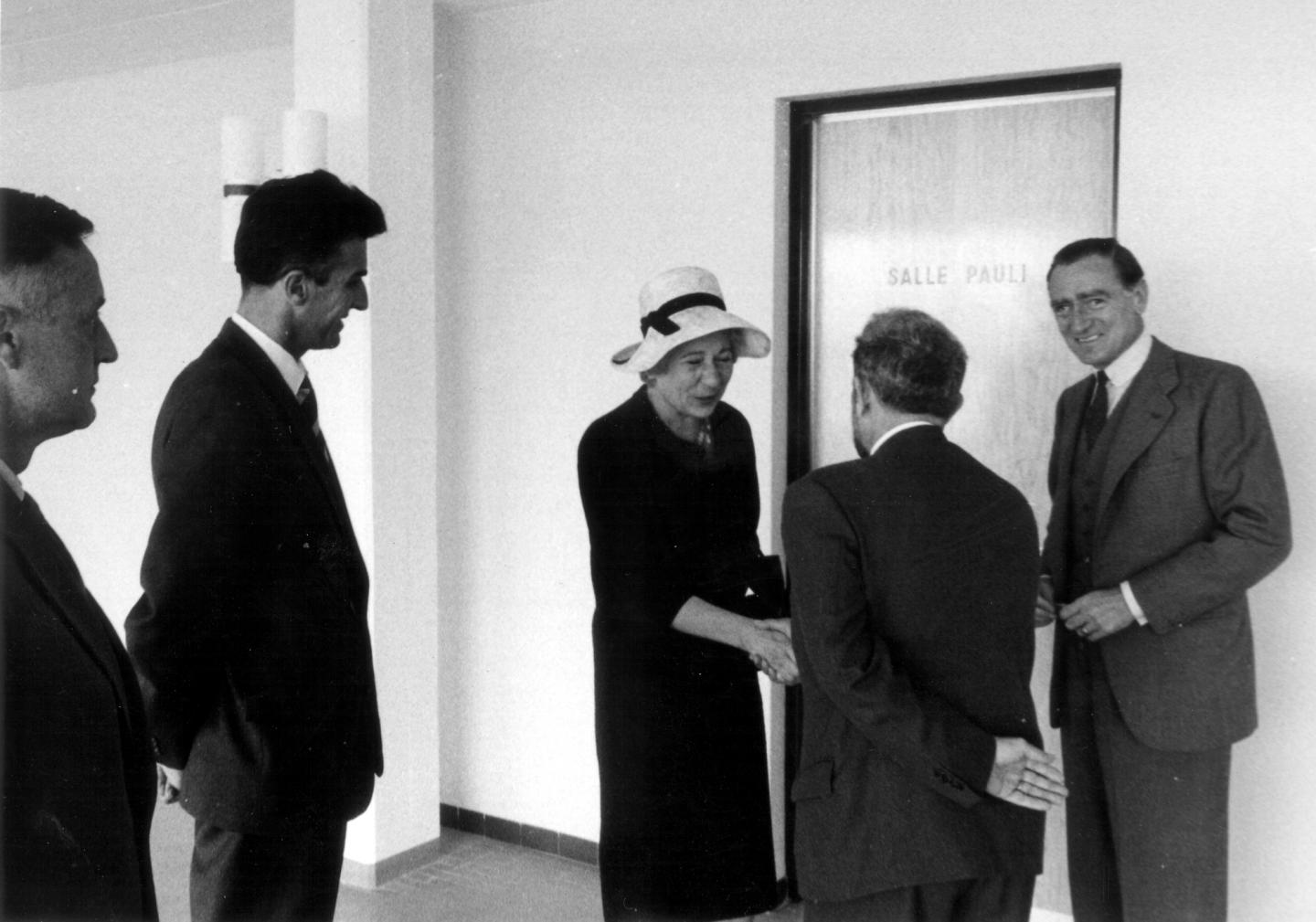
|
June 1960 - CERN commemorates Wolfgang Pauli | CERN has the privilege of housing the scientific archive of 1945 Nobel-prizewinning physicist Wolfgang Pauli. This small but historically valuable collection was donated by Pauli’s widow who, with the help of friends, tracked down originals or copies of his numerous letters. This correspondence, with Bohr, Heisenberg, Einstein and others, provides an invaluable resource on the development of 20th century science. Franca Pauli can be seen here with two of CERN’s founding fathers, Francis Perrin and François de Rose, at the inauguration of CERN’s Pauli Memorial Room (Salle Pauli) on 14 June 1960 (press release, in French). The Archive also includes photographs, manuscripts, notes, and a rare audio recording of Pauli lecturing in 1958. Many items have been digitized and are available online; more information is available here. |
|
| This month 40 years ago… | 
|
May 1977 – Inaugurating the Super Proton Synchrotron | On 7 may 1977 Europe inaugurated the world’s largest accelerator – the Super Proton Synchrotron; you can read all about it in the CERN Courier. But what was happening behind the scenes? Did you know that organising secretary, Miss Steel, set up a massive card index to keep track of the guests, entering all the details on 6,000 colour-coded cards? She also insisted on sending reply cards to the VIPs, even though treating them like ordinary mortals was considered infra dig; she said the higher you go in a hierarchy, the less legible signatures become, and she wanted to know who the replies came from. Logistics were further complicated by differing conceptions between the different countries as to what constituted an “official delegate”. Her unofficial report makes interesting reading too. |
|
| This month 57 years ago… | 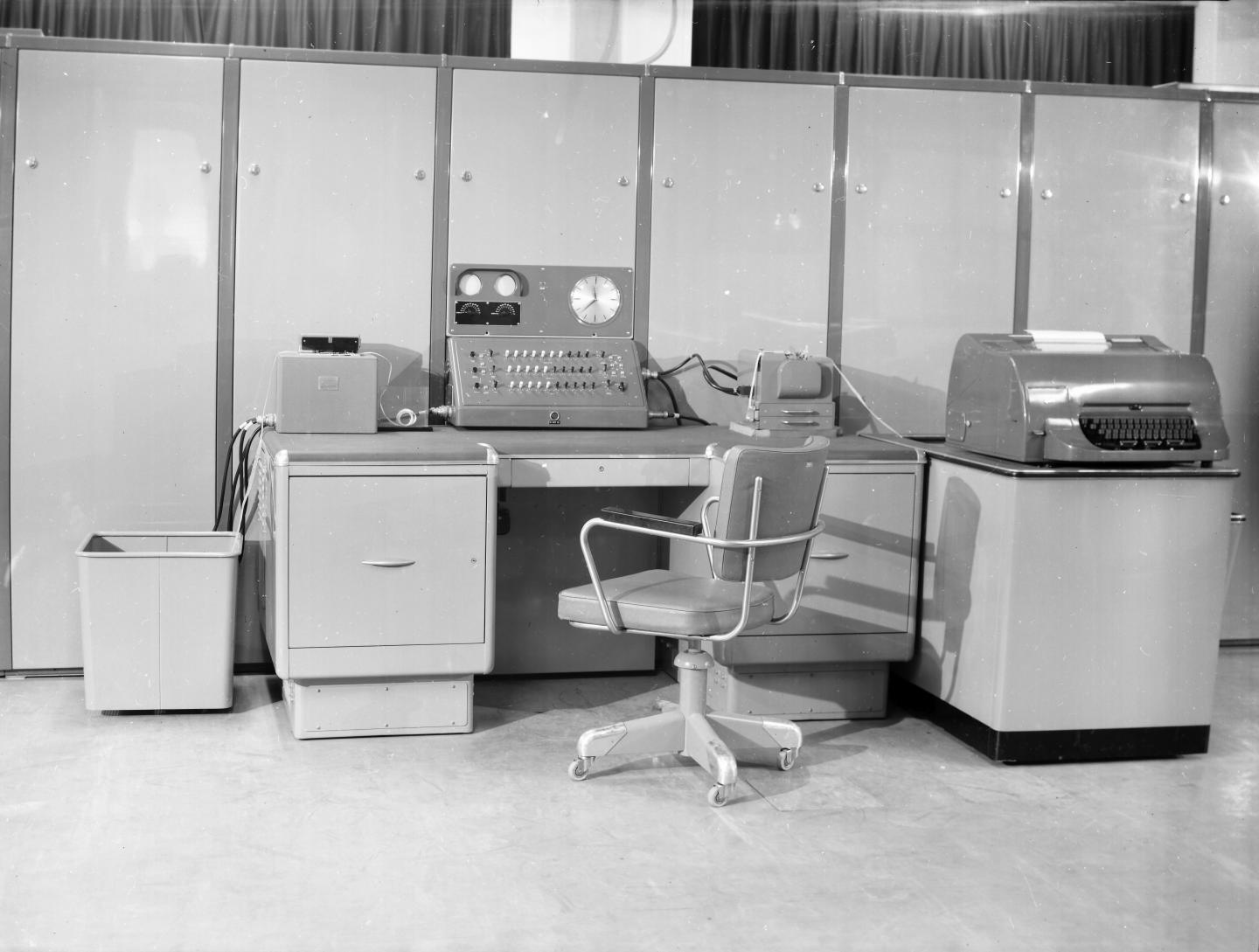
|
April 1960 - First session of the CERN Computer Users’ Committee | Demand for CERN’s Mercury computer had increased rapidly since its arrival in 1958, and by 1960 it was time to impose some sort of order on the users: “The present informal arrangement where every programmer may contact any operator makes it impossible for the operators to work efficiently.” A Users’ Committee was set up (see the minutes of the first meeting), a reception desk was established and some rules laid down. “Programmers have always the strong tendency to ask the operator to perform various emergency actions as soon as their programmes fail. If the operator follows such directions computer time is usually lost unnecessarily. If she refuses (as she is supposed to do), experience shows that people tend to argue. Consequently every effort will be made to have no programmer in the computer room outside normal working hours.” Any questions were to be directed to the Office of the Programming King, Mr Lake. |
|
| This month 45 years ago… | 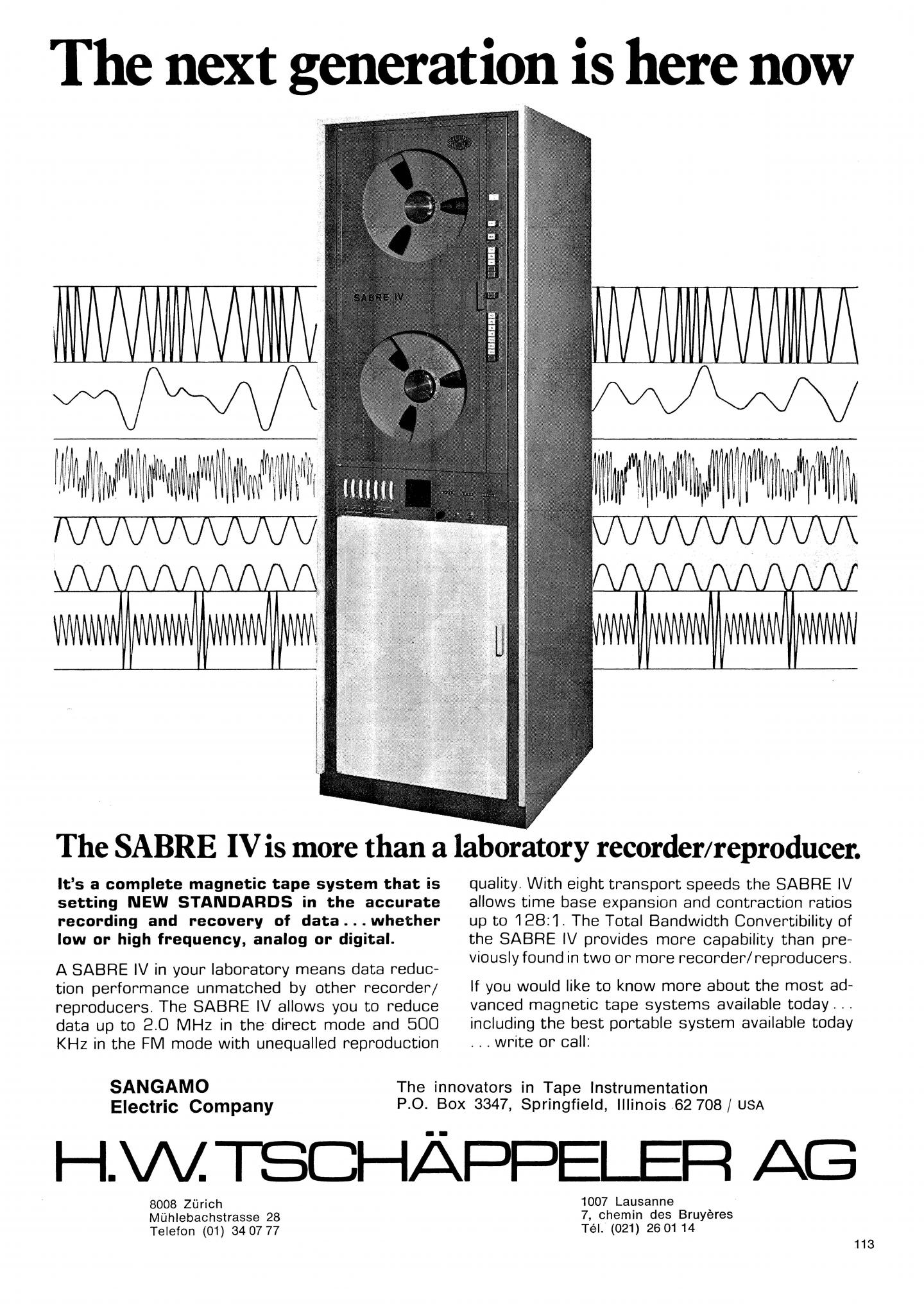
|
March 1972 – Computers: why? | What is a computer? Why does CERN need the new ‘number crunchers’ anyway? These are some of the questions Lew Kowarski tries to answer in a special issue of the CERN Courier devoted to computing at CERN in 1972. In his introduction he explains that high-energy physics is not just about hunting down and photographing strange particles, as though they were so many rare animals. Other articles give details of electronics experiments, bubble chamber experiments, data acquisition and analysis, mathematical computing applications in theoretical studies and more. But it is perhaps the advertisements that really capture the state of the art nearly half a century ago |
|
| This month 58 years ago… | 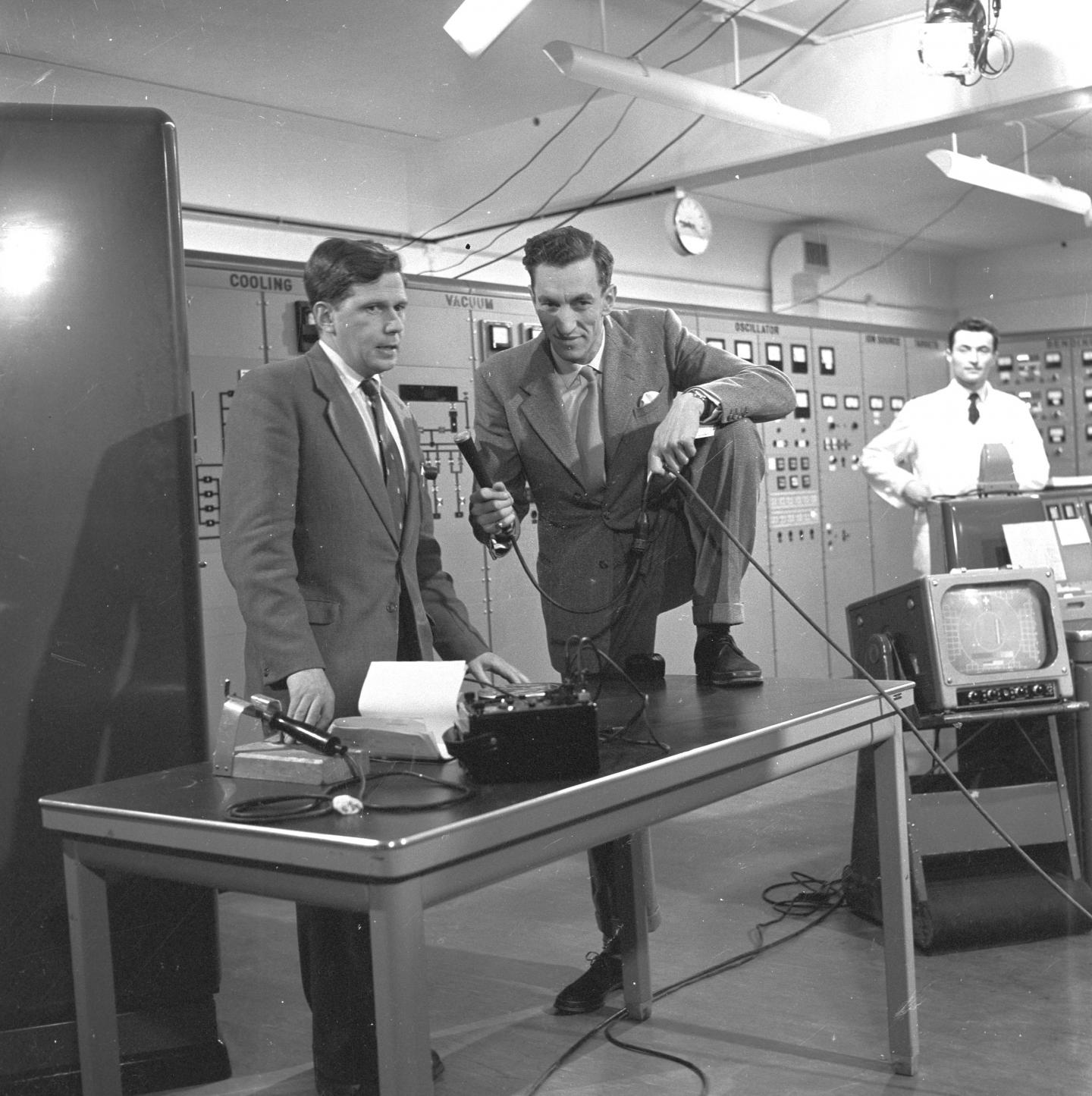
|
February 1959 – Yesterday’s Tomorrow’s World | Fans of vintage British TV science documentaries might enjoy this early precursor to Tomorrow’s World. On weekdays (when the outside broadcast cameras weren’t needed to cover sports fixtures!) the Eye on Research crew visited scientific laboratories and research centres to discuss topical issues. This was the BBC’s first regular science and technology series; it broadcast over forty episodes on a wide range of subjects between 1957 and 1962 (they are listed on BBC Genome). Presenting live from CERN on 24 February 1959, we see Raymond Baxter deploying all his famous interviewing skills to help some distinctly nervous scientists explain their work to the viewers. The soundtrack jumps a bit, but it’s still worth a look. |
|
| This month 54 years ago… | 
|
January 1963 – CERN on ice | It needed more than a broom to tackle the giant icicles decorating CERN’s labs and offices during the great freeze of 1963. The village of La Brévine, 150km away, lived up to its reputation as Little Siberia with temperatures down to -38°C, while cyclists - and even motorists - enjoyed themselves riding across Europe’s frozen lakes and icy rivers. The Swiss electricity network struggled to cope with high demand, reduced production and the failure of a high-tension cable bringing power from Germany. In response, CERN limited its consumption as much as possible, modifying or cutting the experimental programme until things improved. See more photos of CERN in the 1963 snow here. |
|
| This month 45 years ago… | 
|
December 1971 - New home for CERN apprentices | A “modest ceremony” marked the opening of a new training centre for CERN’s apprentices on 9 December 1971. The converted barrack was fitted with a range of equipment, enabling them to practice their skills and spend more time learning together before heading around the laboratory for further training. The apprenticeship programme had been set up in conjunction with the Geneva authorities to take advantage of the extraordinary range of specialist skills found at CERN. It began in 1966 with the enrolment of five young people, two in design office work, one as a laboratory assistant and two in administration. Starting at around the age of 15, they spent three or four years at CERN before moving on to further education or directly into employment. |
|
| This month 51 years ago… | 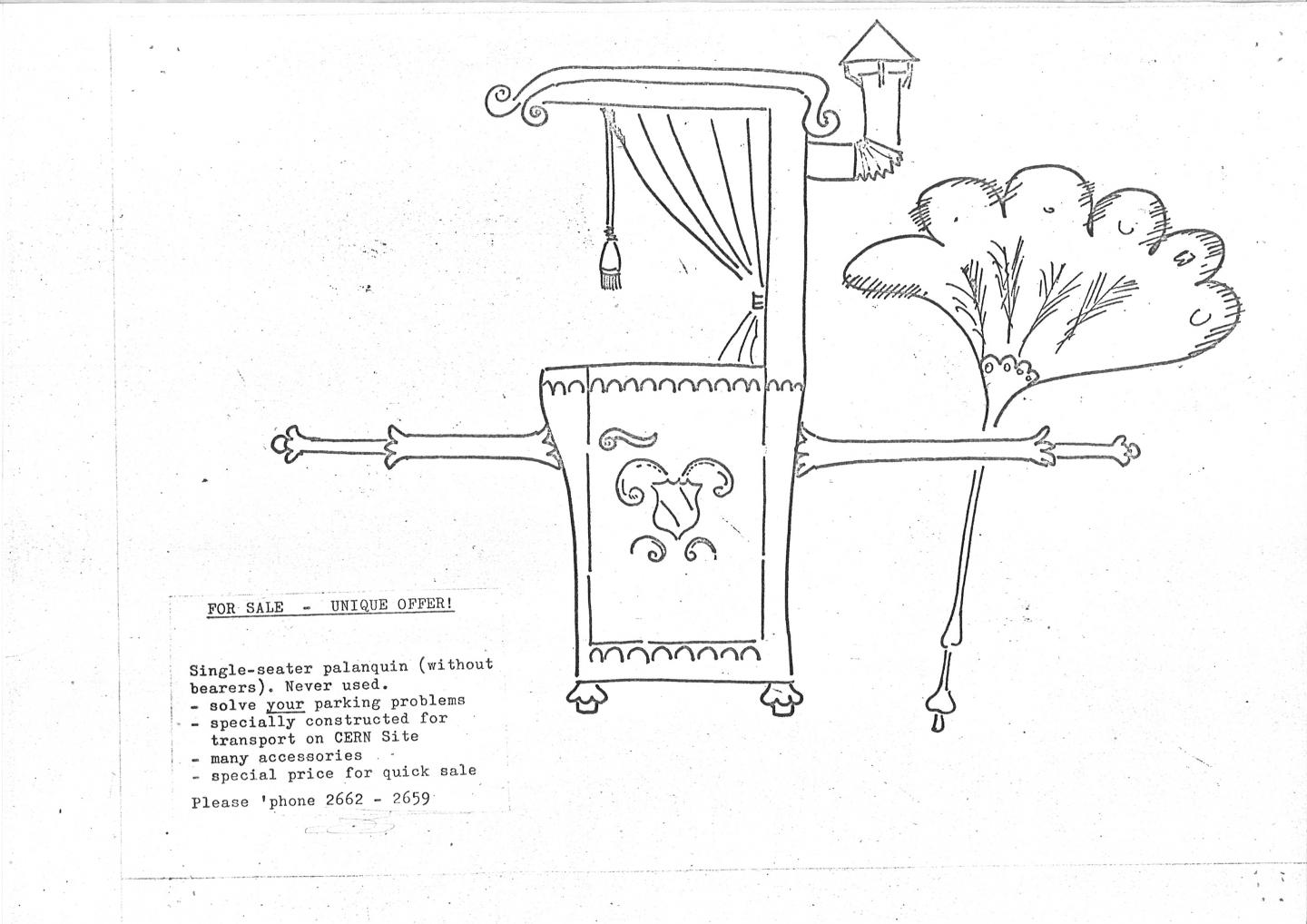
|
November 1965 – No parking problems with a palanquin | A suggestion to ease parking problems on the CERN site by allocating spaces didn’t go down well in 1965. Possibly the priority given to senior staff, and remarks about the benefits of an invigorating walk, gave offence. In any case, an alternative was proposed: ‘May I suggest instead that “senior administrators, division leaders" and the like, be provided with sedan-chairs or palanquins, in which they could be transported swiftly and effortlessly from corner to corner of the site. Other members of the staff would of course function as bearers. This would not only provide them with invigorating exercise, but also inculcate a due sense of their social position.’ A worried prospective bearer suggested motor scooters, as used by nuns on the wards of an Illinois hospital, instead. To prevent congestion indoors, use of the corridors could be limited to senior staff. Other people would get from office to office via the window ledges, not only enjoying healthful exercise but also freeing up more parking spaces as staffing levels gradually decreased when they fell off. The suggestion does not seem to have been adopted, but remains on file. |
|
| This month 82 years ago… | 
|
October 1934 – Pauli and Sommerfeld in Geneva | Wolfgang Pauli is seen here with his former teacher Arnold Sommerfeld attending a conference on the electron theory of metals in Geneva, 15–18 October 1934. The conference proceedings don’t mention any leisure activities, but these included a cable car trip up the nearby Salève mountain to enjoy views of Geneva town, the lake and the Alps. The Salève is in France and Sommerfeld had no French visa, so conference organiser Jean Weiglé obligingly smuggled him up to join the others in his car. |
